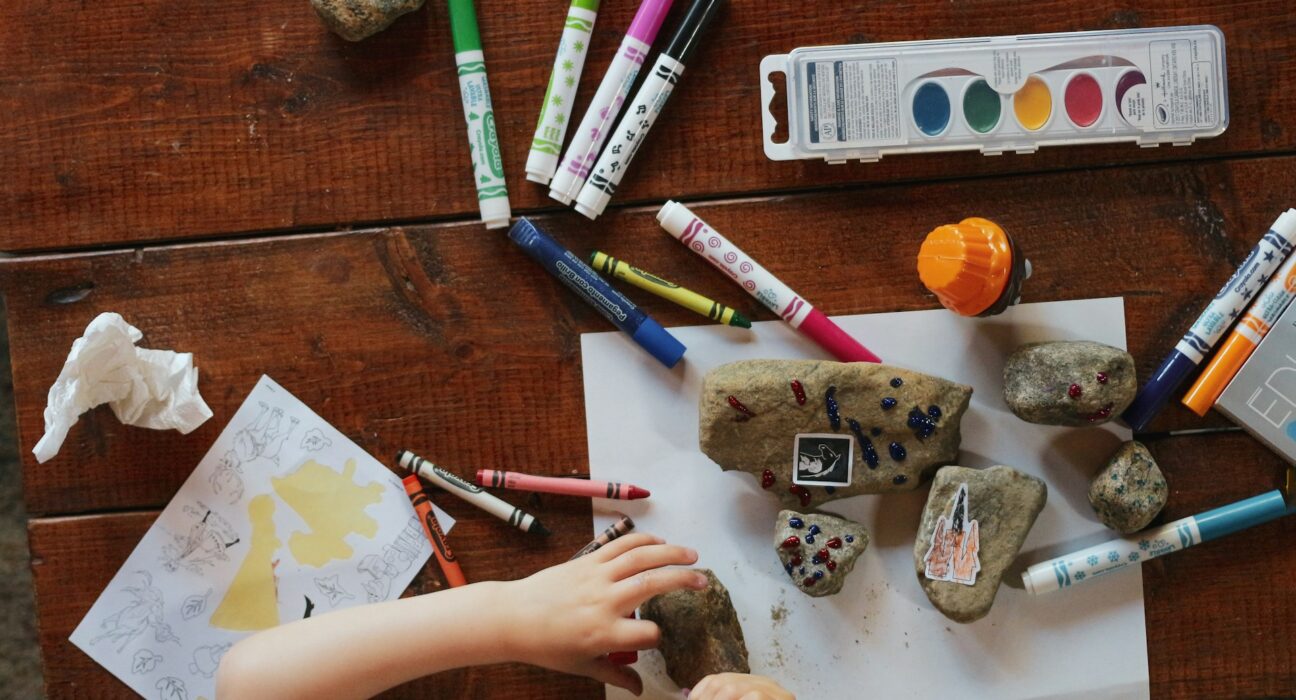Modern parents face an unprecedented challenge: how do you foster imagination and innovation in children when screens dominate their attention? While technology offers valuable learning opportunities, research consistently shows that hands-on exploration and unstructured play remain the cornerstone of childhood development.
The American Academy of Pediatrics reports that children ages 8-12 now spend an average of 4-6 hours per day on screens, while teens can reach up to 9 hours daily. This shift has profound implications for how young minds develop problem-solving skills, emotional intelligence, and the ability to think outside conventional boundaries.
But here’s the encouraging news: parents who intentionally cultivate environments rich in creative opportunities can help their children develop robust imaginative capacities that will serve them throughout their lives. The key lies not in eliminating technology, but in creating compelling alternatives that capture their natural curiosity and desire to create.
The Science Behind Imagination Development
Child development experts have long understood that creative play serves as the foundation for critical thinking, emotional regulation, and social skills. When children engage in open-ended activities, their brains form new neural pathways that enhance cognitive flexibility and innovative thinking.
Dr. Peter Gray’s research at Boston College demonstrates that unstructured play time has decreased by 25% since the 1970s, coinciding with increased anxiety and decreased creativity scores among children. This correlation highlights the vital importance of protecting and prioritizing imaginative activities.
Creative play also builds resilience. Children who regularly engage in storytelling, building, and artistic expression develop stronger coping mechanisms and greater confidence in their ability to solve problems independently.
Building Foundations for Imaginative Growth
Creating Inspiring Physical Spaces
Transform areas of your home into creativity hubs that invite exploration. A well-designed play space doesn’t require expensive equipment—instead, focus on versatility and accessibility.
Designate a corner with art supplies, building materials, and dress-up clothes within easy reach. Rotate materials regularly to maintain novelty and interest. Consider creating themed areas: a reading nook with pillows and soft lighting, a building station with blocks and construction materials, or an art corner with various mediums and tools.
Natural materials often spark more imagination than plastic toys. Collect interesting rocks, shells, pinecones, and fabric scraps. These open-ended materials can become anything in a child’s hands—from magical potions to architectural elements.
Establishing Technology Boundaries
Effective screen time alternatives begin with clear, consistent boundaries around device usage. Rather than viewing this as a restriction, frame it as making space for other exciting activities.
Implement device-free zones and times: no screens during meals, one hour before bedtime, or during designated family activity periods. Create visual schedules that show when screen time is available and when other activities take precedence.
When screens are used, choose interactive, creative content over passive consumption. Programs that encourage singing, movement, or problem-solving can complement rather than replace hands-on creative experiences.
Fostering Daily Innovation Through Simple Activities
Art and Storytelling Adventures
Encourage artistic expression through varied mediums and techniques. Set up painting stations with unconventional tools—sponges, cotton swabs, or even vegetables for stamping. Provide large paper rolls or cardboard boxes for expansive projects that engage their whole body in the creative process.
Storytelling develops both verbal skills and imagination. Create story cubes with pictures or words that children must incorporate into original tales. Encourage them to illustrate their stories or act them out with simple props and costumes.
Consider collaborative storytelling where family members take turns adding sentences to an evolving narrative. This builds listening skills while demonstrating how creativity can be shared and built upon.
Engineering and Building Challenges
Construction activities develop spatial reasoning and problem-solving skills while providing immediate, tangible results. Offer diverse building materials: traditional blocks, magnetic tiles, cardboard boxes, and recycled containers.
Present open-ended challenges: “Can you build a bridge that a toy car can cross?” or “Design a house for this stuffed animal.” These prompts provide direction while leaving room for individual interpretation and innovation.
Encourage experimentation and iteration. When structures fall, celebrate the learning opportunity rather than viewing it as failure. This mindset builds resilience and teaches that creativity involves trial and error.
Nature-Based Exploration
Outdoor experiences provide rich sensory input that screens cannot replicate. Regular nature exposure enhances attention spans, reduces stress, and provides endless inspiration for creative play.
Create outdoor scavenger hunts that encourage close observation of natural details. Challenge children to build fairy houses from natural materials or create art using items found in the yard or park.
Gardening projects combine science learning with nurturing skills. Children can design their own garden spaces, observe growth patterns, and even cook with vegetables they’ve grown themselves.
Nurturing Independence and Problem-Solving
Encouraging Self-Directed Projects
Support children in pursuing their interests and ideas, even when they seem unusual or impractical. When a child expresses curiosity about a topic, help them explore it through multiple modalities—books, experiments, art projects, and field trips.
Provide materials and guidance, but resist the urge to direct every aspect of their exploration. Allow them to make mistakes, change direction, and develop their solutions to the challenges they encounter.
Create project journals where children can document their ideas, progress, and discoveries. This practice develops planning skills and helps them see how their ideas evolve.
Developing Patience and Focus
Extended creative projects teach children to work toward long-term goals and find satisfaction in sustained effort. Unlike the instant gratification of digital entertainment, these parenting tips emphasize activities that unfold slowly and require patience.
Break larger projects into manageable steps, celebrating progress along the way. A dollhouse might be planned one week, constructed the next, and decorated over several more sessions. This approach builds executive function skills while maintaining engagement.
Model your creative processes. Let children see you working on projects, encountering challenges, and persisting through difficult moments. Your example demonstrates that creativity requires effort and patience, but yields deeply satisfying results.
Building Community Around Innovation
Collaborative Family Projects
Engage the entire family in creative endeavors that require different skills and perspectives. Design and build a backyard obstacle course, create a family cookbook with everyone’s favorite recipes, or plan and execute a neighborhood art show.
These shared experiences build family bonds while demonstrating how individual strengths contribute to collective success. Children learn to appreciate different approaches to problem-solving and see how their unique contributions matter.
Connecting with Like-Minded Families
Seek out community groups focused on hands-on learning and creative expression. Many libraries offer maker spaces, art classes, or STEM programs that provide both instruction and social interaction around creative activities.
Consider forming informal playgroups with other families who prioritize screen time alternatives and imaginative play. Regular gatherings provide children with peers who share similar interests and values around creativity.
Frequently Asked Questions
How much screen time is appropriate for different ages?
The American Academy of Pediatrics recommends no screens for children under 18 months (except video chatting), limited high-quality programming for ages 18-24 months, and no more than one hour daily for ages 2-5. For older children, ensure screen time doesn’t interfere with sleep, physical activity, and face-to-face social interaction.
What if my child resists non-screen activities?
Transition gradually rather than making sudden changes. Start with short periods of screen-free time and gradually extend them. Engage in activities alongside your child initially, providing enthusiasm and companionship until they develop an independent interest.
How do I handle resistance from extended family or caregivers?
Communicate your values clearly and provide specific alternatives that others can easily implement. Create activity kits with supplies and instructions that babysitters or grandparents can use. Emphasize the benefits you’ve observed rather than criticizing their current approaches.
Are all screens equally problematic for creativity?
Not necessarily. Interactive content that encourages participation, creation, or problem-solving can complement hands-on activities. The key is balance and intentional selection rather than passive consumption of entertainment content.
Embracing the Journey of Discovery
Raising imaginative children requires intentionality, patience, and trust in their natural capacity for wonder. While screens will remain part of modern childhood, they need not dominate it. By providing rich alternatives and modeling creative problem-solving ourselves, we give children tools they’ll use throughout their lives.
The goal isn’t to eliminate technology, but to ensure it serves rather than replaces the fundamental human experiences of creation, exploration, and discovery. When children learn to find joy in making rather than just consuming, they develop confidence in their ability to shape their world rather than simply respond to it.
Start small, stay consistent, and celebrate the unique ways your child’s imagination unfolds. The investment in their creative development today will yield dividends in their ability to innovate, adapt, and find fulfillment throughout their lives.







